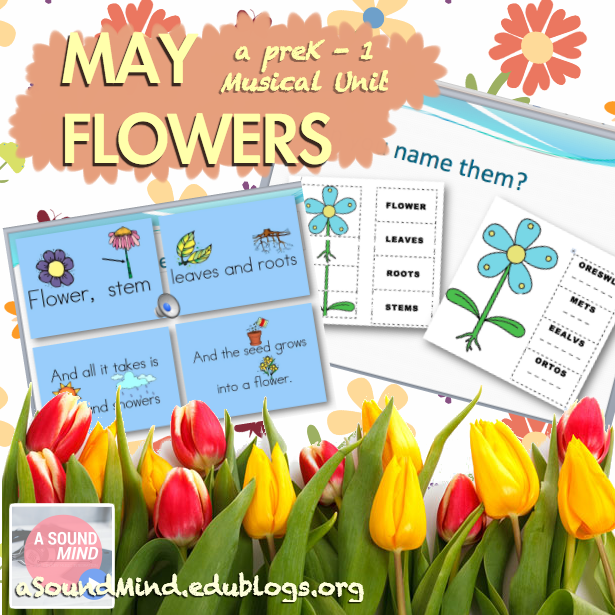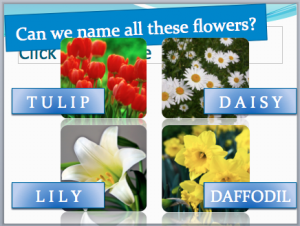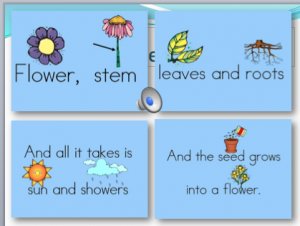
May Flowers
April showers bring May flowers, and with that come opportunities to integrate the science of plants into your classroom! In the K-2 curriculum maps, this short lesson is the perfect intro to a unit on the parts of a plant.
![]()
Find full lesson and materials HERE ( https://www.teacherspayteachers.com/Product/May-Flowers-Science-w-Music-Integration-2496697 )
It’s still early May, so the flowers are mostly tulips and daffodils, but you can just tell the students are so excited! It warm outside and we have a lot of migrating birds singing every morning. The birds aren’t the only ones singing though! We’re covering science standard SC.1.L.14.2 which is that students need to identify basic parts of a plant including flowers, stems, roots, leaves, etc. With all the beauty and blooming in nature I thought why not have a little fun with it?

The basic idea of the lesson is that, through song, the student will learn the basic parts but we also tie in all sort of other subject material, really making use of common core! I start them out with a little brain teaser, a word scramble of popular flower names. Most will just be able to recognize by pictures, but still the real purpose was just to engage students, so even if they aren’t actually unscrambling the words it still works because now they’re hooked!
From there we talk about the various parts of the flower, focusing on flower, stems, leaves, and roots. The song follow the tune of “Head, Shoulders, Knees, and Toes” and just like the original we have corresponding body movements as well! (And some of my students still need gross-motor skills) For the flower we reach above our head and spread out our fingers likes flowers, then for stem we put them together so we’re like a just straight stem, leaves we’ll bring out arms down to the shoulders and stretch them out into a T, and for roots we spread out fingers again but this time point them at the ground. It really helps to not only keep the kids active and engaged, but also aids in their memorization. You can try different variations too, like one w/o singing and just the motions, or play a simon says variation where they have to make the motion you say (but you can trick them by performing something different than what they need to do) Usually we do it maybe 5 times, over a period of about 10 minutes, and then again once more at the end of the lesson.
 From there, I have a quick science video of Dr. Binocs from Peekaboos Kids explain the science behind parts of the plant and he does a great job going beyond the four we learning. It’s a short entertaining clip that students can watch while they take a well deserved break from all their singing and dancing. Then for the last few minutes I’ll pass out an exit worksheet, and I have several variations (since I teach this to more than one grade). They review the material and vary between matching words to pictures to fill in the blanks. After all the reviewing we did most student make short work of it, so if there’s still time left I have them color it!
From there, I have a quick science video of Dr. Binocs from Peekaboos Kids explain the science behind parts of the plant and he does a great job going beyond the four we learning. It’s a short entertaining clip that students can watch while they take a well deserved break from all their singing and dancing. Then for the last few minutes I’ll pass out an exit worksheet, and I have several variations (since I teach this to more than one grade). They review the material and vary between matching words to pictures to fill in the blanks. After all the reviewing we did most student make short work of it, so if there’s still time left I have them color it!  It’s a great quick lesson, that’s been pretty well received on TPT (flattered) but what counts is that it does its job. The kids like and they learn the content. So whether you want to use more music and dance in your room, or just trying to find a way to liven up your science block. This is a fun little lesson to try. If they really like it, why not try and take a Listening Walk out side and see how many plant parts you can identify on real flowers!
It’s a great quick lesson, that’s been pretty well received on TPT (flattered) but what counts is that it does its job. The kids like and they learn the content. So whether you want to use more music and dance in your room, or just trying to find a way to liven up your science block. This is a fun little lesson to try. If they really like it, why not try and take a Listening Walk out side and see how many plant parts you can identify on real flowers!
permalink: https://www.teacherspayteachers.com/Product/May-Flowers-Science-w-Music-Integration-2496697